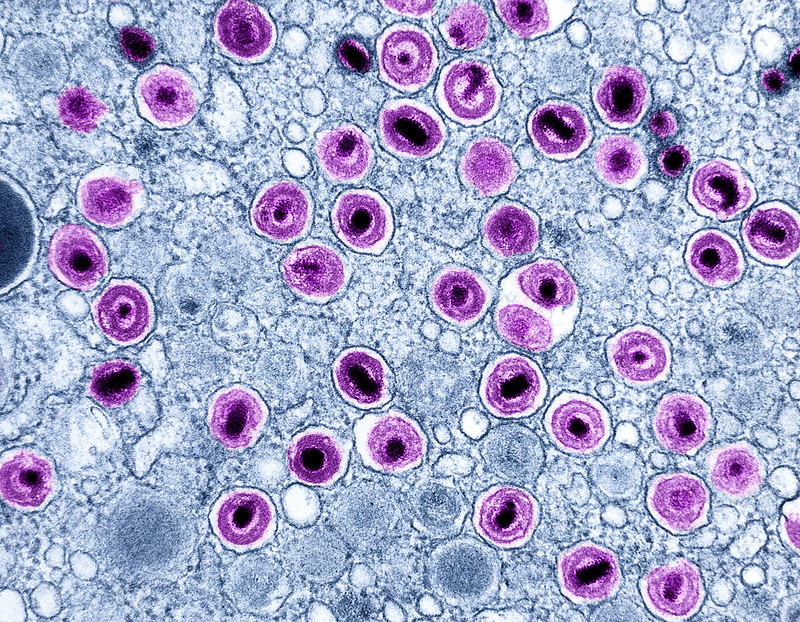A vaccine platform that promises a one-shot solution to the flu has just been tested on a potential pandemic strain, and the scientists behind it say their results are very promising indeed.
“I think it means within five to 10 years, a one-and-done shot for influenza is realistic,” said corresponding author Jonah Sacha of Oregon Health & Science University in a statement.
A flu vaccine that could negate the need for annual booster shots – and absolve scientists of the task of predicting which strains are going to dominate each season – has always been up there with the biggest research goals of modern medicine. Lots of different approaches are in development, from a vaccine mixed from 80,000 proteins, to ones that leverage the mRNA technology that saw such success against COVID-19.
This time, the scientists have reworked a vaccine platform that they’re also using to try and target tuberculosis and HIV, with the HIV candidate already in clinical trials. The platform uses a vector – another virus that doesn’t cause serious disease in humans, but can be used as a carrier for the pathogen that you want to vaccinate against.
In this case, that carrier is cytomegalovirus (CMV). Most of us will be infected with it in our lifetimes, with few to no symptoms. The scientists engineered the virus to contain small pieces of an infamous influenza strain – the one responsible for the 1918 pandemic, often (incorrectly) nicknamed the “Spanish flu”.

Purple cytomegalovirus particles, captured in this microscope image inside an infected macrophage (a type of white blood cell).
The team vaccinated 11 Mauritian cynomolgus macaque monkeys, before exposing them to a strain of flu that’s much more up to date: avian H5N1, which is currently circulating in US dairy cows as well as hitting other mammal species around the world.
Six of the 11 monkeys survived the exposure to H5N1, a notoriously deadly flu strain. That’s despite the fact that the strain the vaccine was actually based on predates it by almost a century.
“It worked because the interior protein of the virus was so well preserved,” Sacha explained. “So much so, that even after almost 100 years of evolution, the virus can’t change those critically important parts of itself.”
This is the crux of why this study is potentially so exciting. It holds the promise of a vaccine targeting the parts of the flu virus that remain conserved over long periods of time, even while it’s rearranging and mutating itself so efficiently that we can never quite know when a strain with pandemic potential will come along.
Experts have been warning of the potential consequences of bird flu making a sustained jump into the human population. Quite apart from the fact that we’re not even done with the last pandemic we had to face, an H5N1 strain adapted to spread between people could cause devastating disease outbreaks if not controlled.
“Inhalation of aerosolized H5N1 influenza virus causes a cascade of events that can trigger respiratory failure,” said co-author Dr Simon Barratt-Boyes of the University of Pittsburgh. “The immunity induced by the vaccine was sufficient to limit virus infection and lung damage, protecting the monkeys from this very serious infection.”
Hopefully, an updated CMV-based vaccine for humans could do the same for us.
More research and clinical trials will clearly be required before any such vaccine can be marketed, but the scientists are optimistic that the timelines involved might be shorter than you would think. Rather than decades, Sacha believes we could be looking at “five years or less” – and not only for the flu.
“For viruses of pandemic potential, it’s critical to have something like this. We set out to test influenza, but we don’t know what’s going to come next,” he said, adding, “It’s a very viable approach.”
No more yearly flu shots? A potential defence against the next pandemic? Can we dare to hope that we’re finally reaching these goals? Maybe.
“It’s a massive sea change within our lifetimes,” Sacha concluded. “There is no question we are on the cusp of the next generation of how we address infectious disease.”
The study is published in Nature Communications.
Source Link: The New Universal Flu Vaccine Scientists Say Could Be Ready In “Five Years Or Less”